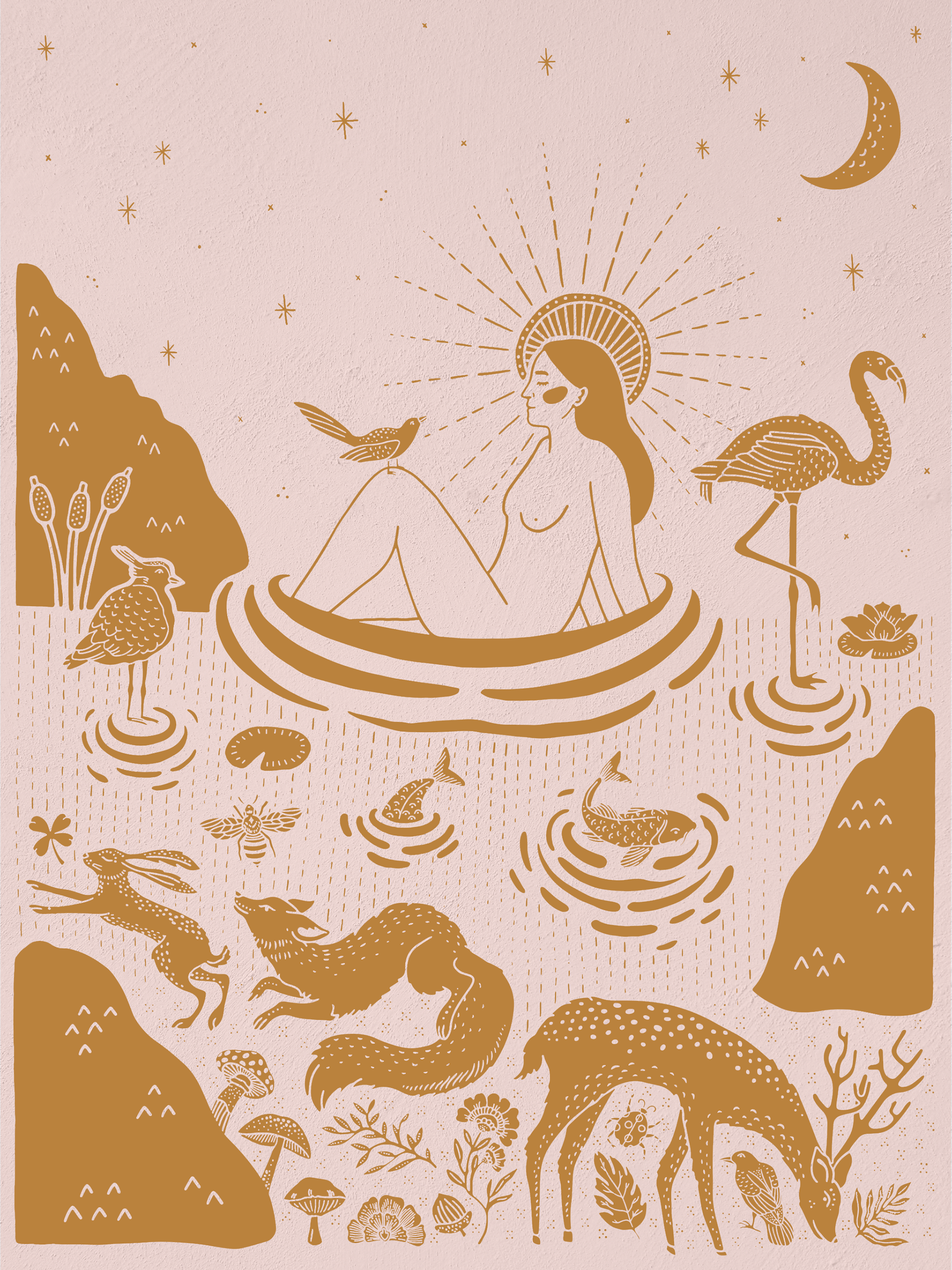“Stories have to be told or they die, and when they die, we can’t remember who we are or why we’re here.”
--Sue Monk Kidd




Every continent across the earth has ancient origins in a matristic* belief system. Though potentially difficult to imagine in our modern patriarchal world, archaeological and anthropological investigations confirm that humankind’s perception of God was female long before it was ever male. Mother Earth’s story of creative compassion has been told by all her children. This collection seeks to retell our mother’s story as told by her children in Ancient America, Finland, Australia, and India, respectively. Inspired by women’s creativity applied anciently and today, I wanted to weave these stories into handmade wearables that seek to honor the traditional relationship between women’s creative handy work and divinity. Understanding where we come from helps us see more clearly where we are going.
* Being or relating to a prehistoric female-led society based around Mother Goddess worship.
The Huron creation myth begins with a goddess known as Sky Woman falling from above towards an abyss of water. Two loons rush to her rescue, acting as pillows to brace her, calling out to the other water animals to come and help. A Giant tortoise offers to let her sit on his back and a council is held amongst the animals and Sky Goddess to determine what is to be done. Deciding that she needs a permanent place to live, the animals are instructed to dive below the water’s surface in order to find earth. The toad succeeds in this task, offering a small bit of earth to the goddess, who places it on the tortoise’s back. The earth spreads until land covers the tortoise’s back, which supports the world to this day.
An early Finnish creation story begins with Ilmatar, the daughter of the sky who finds herself floating atop the endless expanse of primeval waters. She swims for 700 years, longing for other life, until she sees a beautiful little bird hovering nervously above the water’s surface, looking for a place to rest its tired wings. Ilmatar bends her knee, raising it above the water so that the bird can perch atop it. There, the bird settles in and lays six golden eggs that eventually become the beginnings of creation: the egg whites become the moon and stars, the yolk becomes the sun, and the eggshells become land. These developments inspire Ilmatar to further the work of creation, ultimately creating the mountains, beaches and cliffs with just the point of her finger, while her footprints become pools for fish. She continues, creating all that is.
In Kakadu mythology, as in all Australian aboriginal myths, the theme of creation from chaos is central to the creation story. In this tale, Great Mother Imberombera wanders about, her belly full of children, carrying bags of yams on a large stick. As she strolls, she plants yams and leaves behind spirit children, leaving them in different regions with various languages gifted to them. Her role here is not only as primary creator, but as thoughtful organizer of various peoples and languages across a myriad of regions.
In one Northwest Indian creation story, we learn of the mother goddess known as Kujum-Chantu, who is the earth manifest in human form. All of earth’s humans live on her belly as she lays below supporting them. One day, she realizes that if she moves too much or stands up, she will incidentally kill all of the humans that live on her. So, she gives herself willingly to death’s grasp. Her stilled head becomes snowy mountains, her back bones turn to rolling hills, her chest and neck become valleys. Her body becomes the steady earth beneath human feet.
“I have learned that each and every piece of cloth embodies the spirit, skill, and personal history of an individual weaver... It ties together with an endless thread the emotional life of my people.”
--Nilda Callanaupa Alvarez



The bandana suggests feminine power and strength. From the ancient women of Greece to the iconic Rosie the Riveter, bandana-bearing women have a way of capturing our attention. Women pull back their hair as they lay their hands to works of passion, necessity, creation, and devotion.